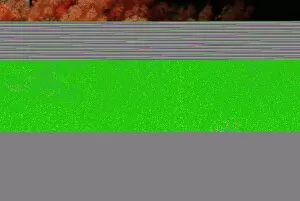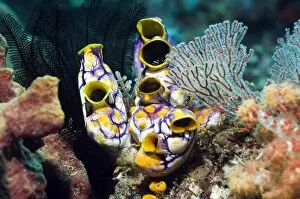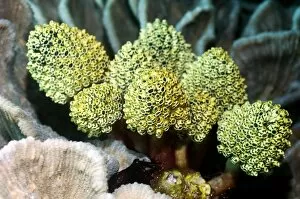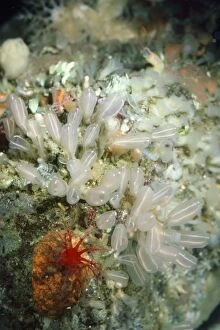Tunicate Collection (page 3)
Discover the fascinating world of tunicates, also known as sea squirts. These unique marine creatures come in various forms and play important roles in our oceans
All Professionally Made to Order for Quick Shipping
Discover the fascinating world of tunicates, also known as sea squirts. These unique marine creatures come in various forms and play important roles in our oceans. One captivating species is the Light bulb Sea Squirt or Tunicate, found in the North Atlantic. Its vibrant colors resemble a glowing light bulb underwater, making it a stunning sight to behold. Nudibranchs, such as the Nembrotha chamberlaini, have developed a taste for these tunicates and can be seen gracefully feeding on sea squirts on coral reefs, creating an intricate dance of predator and prey. The Red sea fan with gorgonian corals and Light-bulb sea squirt create a mesmerizing scene beneath the waves. The delicate beauty of these organisms intertwines to form an underwater masterpiece. Even other creatures seek refuge among tunicates' protective structures. A Giant rock scallop finds solace encrusted within their sturdy bodies, showcasing nature's ability to adapt and coexist. In some regions like Scotland's west coast or Puerto Galera in the Philippines, tunicates take on different forms. The Maidens salp and Goldring tunicate add splashes of color to these diverse ecosystems while serving vital ecological functions. But not all interactions are harmonious; some slugs like Thuridilla gracilis use their sapsucking abilities to feed off Royal seasquirts' surfaces. This constant struggle for survival highlights the complexity of life beneath the waves. Through breathtaking images captured by DDE-90037325, DDE-90037307, DDE-90024844, and DDE-90024842 we can witness firsthand the incredible diversity that exists within this group of organisms. Tunicates may seem unassuming at first glance but delve deeper into their world and you'll discover a realm filled with wonderment and intrigue—a testament to nature's boundless creativity beneath our oceans' surface.
























